Episodes

Monday Jan 06, 2020
Episode 360 - Imaging hard-working Cells keeping you alive during illness
Monday Jan 06, 2020
Monday Jan 06, 2020
How do we peer into the inner workings of our cells, especially during their response to a medical emergency? What role does fibroblasts play to protect your heart after a heart attack? When is your body hardest at work repairing damage after a heart attack? What stem cells control your blood cells? How can we get a picture of the complex 3D shape of blood stem cells in your bone marrow? What role does bone marrow play in blood regulation?
References:
- Chiara Baccin, Jude Al-Sabah, Lars Velten, Patrick M. Helbling, Florian Grünschläger, Pablo Hernández-Malmierca, César Nombela-Arrieta, Lars M. Steinmetz, Andreas Trumpp, Simon Haas. Combined single-cell and spatial transcriptomics reveal the molecular, cellular and spatial bone marrow niche organization. Nature Cell Biology, 2019; DOI: 10.1038/s41556-019-0439-6
- Zohreh Varasteh, Sarajo Mohanta, Stephanie Robu, Miriam Braeuer, Yuanfang Li, Negar Omidvari, Geoffrey Topping, Ting Sun, Stephan G. Nekolla, Antonia Richter, Christian Weber, Andreas Habenicht, Uwe A. Haberkorn, Wolfgang A. Weber. Molecular Imaging of Fibroblast Activity After Myocardial Infarction Using a 68Ga-Labeled Fibroblast Activation Protein Inhibitor, FAPI-04. Journal of Nuclear Medicine, 2019; 60 (12): 1743 DOI: 10.2967/jnumed.119.226993

Monday Dec 30, 2019
Episode 359 - Life surviving on freezing planets, faint suns and meteorites
Monday Dec 30, 2019
Monday Dec 30, 2019
What can bacteria from an iron ore rich lake tell us about life on early earth? Have scientists finally solved a Carl Sagan paradox about life on early earth? When the earth was young, so was the sun, and that meant less light and heat. How did early life on earth survive if there was not enough sunlight to keep it warm? How did iron ore eating and secreting bacteria help lead to widespread life on our planet? How did micro organisms get enough oxygen to survive when the entire planet was frozen over? What can iron ore deposits tell us about life surviving when the entire planet was frozen over? Can life survive on a meteorite, the answer is surprising. How can a microbe be more suited to life on a meteorite than on earth?
- Katharine J. Thompson, Paul A. Kenward, Kohen W. Bauer, Tyler Warchola, Tina Gauger, Raul Martinez, Rachel L. Simister, Céline C. Michiels, Marc Llirós, Christopher T. Reinhard, Andreas Kappler, Kurt O. Konhauser, Sean A. Crowe. Photoferrotrophy, deposition of banded iron formations, and methane production in Archean oceans. Science Advances, 2019; 5 (11): eaav2869 DOI: 10.1126/sciadv.aav2869
- Maxwell A. Lechte, Malcolm W. Wallace, Ashleigh van Smeerdijk Hood, Weiqiang Li, Ganqing Jiang, Galen P. Halverson, Dan Asael, Stephanie L. McColl, Noah J. Planavsky. Subglacial meltwater supported aerobic marine habitats during Snowball Earth. Proceedings of the National Academy of Sciences, 2019; 201909165 DOI: 10.1073/pnas.1909165116
- Tetyana Milojevic, Denise Kölbl, Ludovic Ferrière, Mihaela Albu, Adrienne Kish, Roberta L. Flemming, Christian Koeberl, Amir Blazevic, Ziga Zebec, Simon K.-M. R. Rittmann, Christa Schleper, Marc Pignitter, Veronika Somoza, Mario P. Schimak, Alexandra N. Rupert. Exploring the microbial biotransformation of extraterrestrial material on nanometer scale. Scientific Reports, 2019; 9 (1) DOI: 10.1038/s41598-019-54482-7
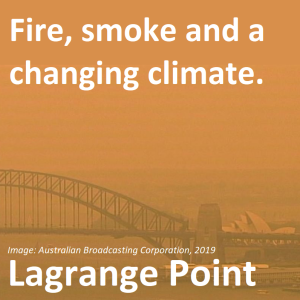
Monday Dec 23, 2019
Episode 358 - Wildfires, climate change, smog and charcoal
Monday Dec 23, 2019
Monday Dec 23, 2019
As the climate changes, wildfires become more common and more dangerous. Smoke clouds from wildfires can linger for weeks, but what chemistry changes inside the smog? Aerosols amongst other particles lurk inside wildfire smoke. How do we study the changes in wildfire smoke; by flying planes through the plumes. How do wildfires impact the CO2 emissions of a region? Can wildfires help store carbon through charcoal? What can charred biomass to do help capture carbon?
- Kouji Adachi, Arthur J. Sedlacek, Lawrence Kleinman, Stephen R. Springston, Jian Wang, Duli Chand, John M. Hubbe, John E. Shilling, Timothy B. Onasch, Takeshi Kinase, Kohei Sakata, Yoshio Takahashi, Peter R. Buseck. Spherical tarball particles form through rapid chemical and physical changes of organic matter in biomass-burning smoke. Proceedings of the National Academy of Sciences, 2019; 201900129 DOI: 10.1073/pnas.1900129116
- Matthew W. Jones, Cristina Santín, Guido R. van der Werf, Stefan H. Doerr. Global fire emissions buffered by the production of pyrogenic carbon. Nature Geoscience, 2019; DOI: 10.1038/s41561-019-0403-x

Monday Dec 16, 2019
Episode 357 - Microbiology vs Macro climate challenges
Monday Dec 16, 2019
Monday Dec 16, 2019
Scientist are turning to microbiology to fight global climate challenges. How do you change a microbe from consumer to producer? Can you teach old e-coli new tricks, and make it consume CO2? How can a gut bacteria start to behave like a plant? Can we use enzymes to produce Hydrogen gas efficiently? What is the missing step in hydrogen fuel cell production? Can synthesised enzyme engines help us produce hydrogen without complex processes?
References:
- Gleizer et al. Conversion of Escherichia coli to Generate All Biomass Carbon from CO2. Cell, 2019 DOI: 10.1016/j.cell.2019.11.009
- The binuclear cluster of [FeFe] hydrogenase is formed with sulfur donated by cysteine of an [Fe(Cys)(CO)2(CN)] organometallic precursor. Proceedings of the National Academy of Sciences, 2019; 116 (42): 20850 DOI: 10.1073/pnas.1913324116

Monday Dec 09, 2019
Episode 356 - Responding to signs of danger
Monday Dec 09, 2019
Monday Dec 09, 2019
How do animals communicate information about danger? When a threat is detected by one animal, how do they pass it along to others? Does empathy play a role in how a create responds to a threat? Does the reaction of others around you change your response to threats? What chemical causes you to freeze in response to danger? How does serotonin cause deer in the headlights moments? What's the link between serotonin and slowing down in response to danger?
- Yingying Han, Rune Bruls, Efe Soyman, Rajat Mani Thomas, Vasiliki Pentaraki, Naomi Jelinek, Mirjam Heinemans, Iege Bassez, Sam Verschooren, Illanah Pruis, Thijs Van Lierde, Nathaly Carrillo, Valeria Gazzola, Maria Carrillo, Christian Keysers. Bidirectional cingulate-dependent danger information transfer across rats. PLOS Biology, 2019; 17 (12): e3000524 DOI: 10.1371/journal.pbio.3000524
- Clare E. Howard, Chin-Lin Chen, Tanya Tabachnik, Rick Hormigo, Pavan Ramdya, Richard S. Mann. Serotonergic Modulation of Walking in Drosophila. Current Biology, 2019; DOI: 10.1016/j.cub.2019.10.042

Monday Nov 18, 2019
Monday Nov 18, 2019
Plants play an important role in our environment, yet there is still so much more to understand. We often think of nature as a zero sum game, but older and younger plants can collaborate. When surviving in a harsh environment, the best results occur when old and young plants grow together. Photosynthesis seems simple, but understanding the intricacies of the mechanisms can help us boost crop yields. Regulating the amount of photosynthesis can help plants survive or thrive in changing climates. How do boreal forests help capture nitrogen from the air? What does an odd metal have to do with forests in Canada storing nitrogen?
- Alicia Montesinos-Navarro, Isabelle Storer, Rocío Perez-Barrales. Benefits for nurse and facilitated plants emerge when interactions are considered along the entire life-span. Perspectives in Plant Ecology, Evolution and Systematics, 2019; 41: 125483 DOI: 10.1016/j.ppees.2019.125483
- Lorna A. Malone, Pu Qian, Guy E. Mayneord, Andrew Hitchcock, David A. Farmer, Rebecca F. Thompson, David J. K. Swainsbury, Neil A. Ranson, C. Neil Hunter, Matthew P. Johnson. Cryo-EM structure of the spinach cytochrome b6 f complex at 3.6 Å resolution. Nature, 2019; DOI: 10.1038/s41586-019-1746-6
- Princeton University. (2019, November 11). Nature's backup plan for converting nitrogen into plant nutrients. ScienceDaily. Retrieved November 15, 2019 from www.sciencedaily.com/releases/2019/11/191111180100.htm
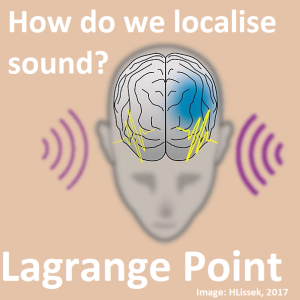
Monday Nov 11, 2019
Episode 352 - Figuring out where sound comes from and perceiving pitch
Monday Nov 11, 2019
Monday Nov 11, 2019
This week we look at the way our brains process sound, music, pitch and rhythm. How does our brain figure out where a sound is coming from? Do our eyes and ears process distance and location in a similar way? How does our brain discern differences in stimuli? What can we learn about pitch and rhythm from studying a remote Bolivian tribe? Is there a biological limit to our perception of sounds? Is our ability to perceive rhythm, chords and pitch cultural or biological?
References:
- Antje Ihlefeld, Nima Alamatsaz, Robert M Shapley. Population rate-coding predicts correctly that human sound localization depends on sound intensity. eLife, 2019; 8 DOI: 10.7554/eLife.47027
- Nori Jacoby, Eduardo A. Undurraga, Malinda J. McPherson, Joaquín Valdés, Tomás Ossandón, Josh H. McDermott. Universal and Non-universal Features of Musical Pitch Perception Revealed by Singing. Current Biology, 2019; DOI: 10.1016/j.cub.2019.08.020
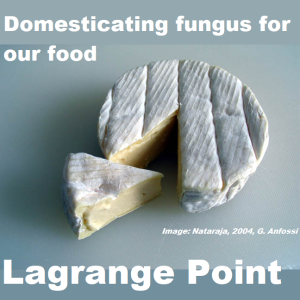
Monday Oct 21, 2019
Episode 349 - Domesticating fungus for our food
Monday Oct 21, 2019
Monday Oct 21, 2019
Humans have been using micro-organisms like fungus and bacteria to help improve our food for millennia. Can we tame new wild species of fungus to help create new types of our favourite foods like cheese? Penicillin is mostly known for antibiotics but it also helps give Camembert its particular taste. What causes cheese to rapidly tame wild strains of fungus? We are not the only ones who use microbes to help our food. Ants help stop disease from destroying plants by spreading their own antibiotics. Ant base antibiotics help stop plant pathogens. Sometimes bacteria don't fight against each other but rather team up and work together. Survival of kindest rules for bacteria, which helps different strains work together to survive.
References:
- Bodinaku, I., Shaffer, J., Connors, A. B., Steenwyk, J. L., Biango-Daniels, M. N., Kastman, E. K., … Wolfe, B. E. (2019). Rapid Phenotypic and Metabolomic Domestication of Wild Penicillium Molds on Cheese. MBio, 10(5). doi: 10.1128/mbio.02445-19
- Joachim Offenberg, Christian Damgaard. Ants suppressing plant pathogens: a review. Oikos, 2019; DOI: 10.1111/oik.06744
- Wenzheng Liu, Samuel Jacquiod, Asker Brejnrod, Jakob Russel, Mette Burmølle, Søren J. Sørensen. Deciphering links between bacterial interactions and spatial organization in multispecies biofilms. The ISME Journal, 2019; DOI: 10.1038/s41396-019-0494-9

Monday Oct 07, 2019
Episode 347 - Capturing carbon with better farms and forests
Monday Oct 07, 2019
Monday Oct 07, 2019
Capturing carbon is important for helping offset CO2 emissions and tackling climate changes. Farming has an important role to play in improving CO2 sequestration with the use of cover crops and compost. Forests are important carbon sinks too, but they are at risk releasing a lot of the trapped carbon if care is not taken to stop invasive species. Plus fertilisers have helped feed the planet but can leech out nitrogen into the environment, so how do we better manage and improve the nitrogen cycle.
- Nicole E. Tautges, Jessica L. Chiartas, Amélie C. M. Gaudin, Anthony T. O'Geen, Israel Herrera, Kate M. Scow. Deep soil inventories reveal that impacts of cover crops and compost on soil carbon sequestration differ in surface and subsurface soils. Global Change Biology, 2019; DOI: 10.1111/gcb.14762
- Songlin Fei, Randall S. Morin, Christopher M. Oswalt, Andrew M. Liebhold. Biomass losses resulting from insect and disease invasions in US forests. Proceedings of the National Academy of Sciences, 2019; 201820601 DOI: 10.1073/pnas.1820601116
- Benjamin Z. Houlton, Maya Almaraz, Viney Aneja, Amy T. Austin, Edith Bai, Kenneth G. Cassman, Jana E. Compton, Eric A. Davidson, Jan Willem Erisman, James N. Galloway, Baojing Gu, Guolin Yao, Luiz A. Martinelli, Kate Scow, William H. Schlesinger, Thomas P. Tomich, Chao Wang, Xin Zhang. A World of Cobenefits: Solving the Global Nitrogen Challenge. Earth's Future, 2019; DOI: 10.1029/2019EF001222

Monday Sep 30, 2019
Monday Sep 30, 2019
Washing machines can save a lot of time and help clean up mess, but they can also harm our health and environment. Which washing process is better for the environment - full an fast or empty and delicate? How do washing machines help fill our oceans with microplastics? What can be done to help stop washing machines contributing to the microplastics in our waterways? Which washing setting is best for your health? Cold and clean or warm and soapy? How did a normal washing machine cause havoc in a hospital? How can you multi-drug resistant pathogens spread through a washing machine?
References:
- American Society for Microbiology. (2019, September 27). Your energy-efficient washing machine could be harboring pathogens: Lower temperatures used in 'energy saver' washing machines may not be killing all pathogens. ScienceDaily. Retrieved September 29, 2019 from www.sciencedaily.com/releases/2019/09/190927135202.htm
- Max R. Kelly, Neil J. Lant, Martyn Kurr, J. Grant Burgess. Importance of Water-Volume on the Release of Microplastic Fibers from Laundry. Environmental Science & Technology, 2019; DOI: 10.1021/acs.est.9b03022

Monday Sep 23, 2019
Monday Sep 23, 2019
Is it possible to stop Alzheimer's in it's tracks? How does the formation of plaques on your brain cells lead to Alzheimer's. Does the your brain immune cells fighting back against plaques lead to Alzheimers? Amino acids in the brain tying themselves into knots, can lead to super strong sealed zippers forming which dry out proteins, damage neurons and eventually can lead to diseases like Alzheimer's. An enzyme missing a repair or two over 60 years can lead to build up of kinked amino acids chains which can lead to neuron-degenerative diseases. What causes a cell to eat itself? Well its actually a pretty healthy thing to do. If a brain cell doesn't eat itself at the right time, well it can lead to a whole bunch of diseases.
- Rebeccah A. Warmack, David R. Boyer, Chih-Te Zee, Logan S. Richards, Michael R. Sawaya, Duilio Cascio, Tamir Gonen, David S. Eisenberg, Steven G. Clarke. Structure of amyloid-β (20-34) with Alzheimer’s-associated isomerization at Asp23 reveals a distinct protofilament interface. Nature Communications, 2019; 10 (1) DOI: 10.1038/s41467-019-11183-z
- Elizabeth Spangenberg, Paul L. Severson, Lindsay A. Hohsfield, Joshua Crapser, Jiazhong Zhang, Elizabeth A. Burton, Ying Zhang, Wayne Spevak, Jack Lin, Nicole Y. Phan, Gaston Habets, Andrey Rymar, Garson Tsang, Jason Walters, Marika Nespi, Parmveer Singh, Stephanie Broome, Prabha Ibrahim, Chao Zhang, Gideon Bollag, Brian L. West, Kim N. Green. Sustained microglial depletion with CSF1R inhibitor impairs parenchymal plaque development in an Alzheimer’s disease model. Nature Communications, 2019; 10 (1) DOI: 10.1038/s41467-019-11674-z
- Yi Yang, Thea L. Willis, Robert W. Button, Conor J. Strang, Yuhua Fu, Xue Wen, Portia R. C. Grayson, Tracey Evans, Rebecca J. Sipthorpe, Sheridan L. Roberts, Bing Hu, Jianke Zhang, Boxun Lu, Shouqing Luo. Cytoplasmic DAXX drives SQSTM1/p62 phase condensation to activate Nrf2-mediated stress response. Nature Communications, 2019; 10 (1) DOI: 10.1038/s41467-019-11671-2

Monday Sep 09, 2019
Monday Sep 09, 2019
Growing enough food to feed the planet is a challenge that will only get harder as the climate changes. So how do farmers and scientists work together to make crops more sustainable, more resilient to disease, and use less herbicides? With genetic engineering, one of the worlds most important crops, rice, can be made even tougher. Using a two type bait gene, rice can be engineered to fight off fungus like rice blast. If you have to spray with herbicides, when should you do it? Well you need to pay attention to the circadian rhythm of the plants.
- Freya A Varden, Hiromasa Saitoh, Kae Yoshino, Marina Franceschetti, Sophien Kamoun, Ryohei Terauchi, Mark J. Banfield. Cross-reactivity of a rice NLR immune receptor to distinct effectors from the rice blast pathogen Magnaporthe oryzae provides partial disease resistance. Journal of Biological Chemistry, 2019; jbc.RA119.007730 DOI: 10.1074/jbc.RA119.007730
- Fiona E. Belbin, Gavin J. Hall, Amelia B. Jackson, Florence E. Schanschieff, George Archibald, Carl Formstone, Antony N. Dodd. Plant circadian rhythms regulate the effectiveness of a glyphosate-based herbicide. Nature Communications, 2019; 10 (1) DOI: 10.1038/s41467-019-11709-5

Monday Aug 26, 2019
Episode 341 - Forming, Saving and preserving new memories
Monday Aug 26, 2019
Monday Aug 26, 2019
Your brain uses proteins synthesis and redundancy to help form and keep memories. Intricate biochemistry helps your neurons connect to each other to form new memories. Forming new memories is a sticky situation. Keeping them stuck together over time in a long lasting memory relies on protein synthesis. Its important not just to have strong connections between neurons to form memories, you also need spares. By having redundancy and backups it means that you can still remember a key memory if one of those connections fails.
References
- Lenzie Ford et al. CPEB3 inhibits translation of mRNA targets by localizing them to P bodies. PNAS, 2019 DOI: 10.1073/pnas.1815275116
- Walter G. Gonzalez, Hanwen Zhang, Anna Harutyunyan, Carlos Lois. Persistence of neuronal representations through time and damage in the hippocampus. Science, 2019: Vol. 365, Issue 6455, pp. 821-825 DOI: 10.1126/science.aav9199
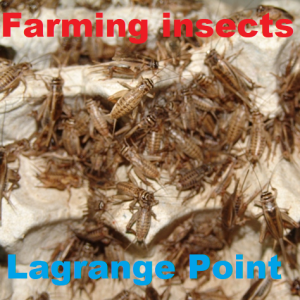
Monday Aug 19, 2019
Episode 340 - Insects revolutionizing agriculture
Monday Aug 19, 2019
Monday Aug 19, 2019
Insects are often thought of as the enemy of farmers, but they can help improve farming. From helpful worm pheromones, to farming crickets and hungry termites. Worms can help boost the resilience of crops like wheat, corn and maize to common threats. Worm pheromones help plants fight back against bacteria, viral and fungal invaders. If insects are the super food of the future, how do you successfully farm them on a large scale? What nutrient rich feed do insect farms need to give their herds? If you are growing crickets and locusts do they need different food? What food is best for termites and how can they be used to help better manage forest?
References:
- Daniel F. Klessig, Murli Manohar, Shine Baby, Aline Koch, Wiseborn B. Danquah, Emily Luna, Hee‐Jin Park, Judith M. Kolkman, B. Gillian Turgeon, Rebecca Nelson, Jan E. Leach, Valerie M. Williamson, Karl‐Heinz Kogel, Aardra Kachroo, Frank C. Schroeder. Nematode ascaroside enhances resistance in a broad spectrum of plant–pathogen systems. Journal of Phytopathology, 2019; 167 (5): 265 DOI: 10.1111/jph.12795
- P. Straub, C.M. Tanga, I. Osuga, W. Windisch, S. Subramanian. Experimental feeding studies with crickets and locusts on the use of feed mixtures composed of storable feed materials commonly used in livestock production. Animal Feed Science and Technology, 2019; 255: 114215 DOI: 10.1016/j.anifeedsci.2019.114215
- Martin F. Jurgensen, Chris A. Miller, Carl T. Trettin, Deborah S. Page-Dumroese. Bedding of Wetland Soil: Effects of Bed Height and Termite Activity on Wood Decomposition. Soil Science Society of America Journal, 2019; 0 (0): 0 DOI: 10.2136/sssaj2018.12.0492
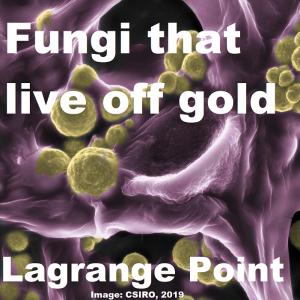
Monday Aug 12, 2019
Monday Aug 12, 2019
To celebrate National Science Week in Australia we are turning our attention to Australian research on the global scale. This week it means tales from microbiology. Stories of how life can survive or sometimes thrive in strange situations. Whether it be Fungi that eat gold, or bacteria chewing deadly gas, microbiology is always full of surprises. How do the tiniest parts of the food-web of our oceans hunt for food in the swirling of stagnant currents of the ocean? How do bacteria turn deadly gas into a food source? Is the secret to tuberculosis's resistance its ability to survive off deadly gas? How do bacteria turn carbon monoxide and hydrogen into something palatable?
References:
- Cordero, P. R., Bayly, K., Leung, P. M., Huang, C., Islam, Z. F., Schittenhelm, R. B., . . . Greening, C. (2019). Atmospheric carbon monoxide oxidation is a widespread mechanism supporting microbial survival. The ISME Journal. doi:10.1038/s41396-019-0479-8
- Islam, Z. F., Cordero, P. R., Feng, J., Chen, Y., Bay, S. K., Jirapanjawat, T., . . . Greening, C. (2018). Two Chloroflexi classes independently evolved the ability to persist on atmospheric hydrogen and carbon monoxide. The ISME Journal. doi:10.1101/457697
- Lehmann, E. (n.d.). Gold-coated fungi are the new gold diggers. Retrieved from https://www.csiro.au/en/News/News-releases/2019/Gold-coated-fungi-are-the-new-gold-diggers
- Bohu, T., Anand, R., Noble, R., Lintern, M., Kaksonen, A. H., Mei, Y., . . . Verrall, M. (2019). Evidence for fungi and gold redox interaction under Earth surface conditions. Nature Communications, 10(1). doi:10.1038/s41467-019-10006-5
- Holland, D., & University of Melbourne. (2019, August 05). The superheroes of nutrient detection living in our oceans. Retrieved from https://pursuit.unimelb.edu.au/articles/the-superheroes-of-nutrient-detection-living-in-our-oceans#
- Brumley, D. R., Carrara, F., Hein, A. M., Yawata, Y., Levin, S. A., & Stocker, R. (2019). Bacteria push the limits of chemotactic precision to navigate dynamic chemical gradients. Proceedings of the National Academy of Sciences, 116(22), 10792-10797. doi:10.1073/pnas.1816621116

Monday Jul 29, 2019
Monday Jul 29, 2019
As the climate changes different species are at risk. Some will thrive and others will struggle, so how do we target conservation efforts to better protect at risk species? Deforestation is a big issue in developing countries, but is there a win-win for the population and the planet? When sea levels rise, we think about flooding and erosion, but not what will happen to the forests and birds who live in them. Trees in the city live fast and die young, which means we need a whole new set of forest management techniques.
References:
- Paul J. Taillie, Christopher E. Moorman, Lindsey S. Smart, Krishna Pacifici. Bird community shifts associated with saltwater exposure in coastal forests at the leading edge of rising sea level. PLOS ONE, 2019; 14 (5): e0216540 DOI: 10.1371/journal.pone.0216540
- C. David L. Orme, Sarah Mayor, Luiz dos Anjos, Pedro F. Develey, Jack H. Hatfield, José Carlos Morante-Filho, Jason M. Tylianakis, Alexandre Uezu, Cristina Banks-Leite. Distance to range edge determines sensitivity to deforestation. Nature Ecology & Evolution, 2019; DOI: 10.1038/s41559-019-0889-z
- Ian A. Smith, Victoria K. Dearborn, Lucy R. Hutyra. Live fast, die young: Accelerated growth, mortality, and turnover in street trees. PLOS ONE, 2019; 14 (5): e0215846 DOI: 10.1371/journal.pone.0215846
- Johan A. Oldekop, Katharine R. E. Sims, Birendra K. Karna, Mark J. Whittingham, Arun Agrawal. Reductions in deforestation and poverty from decentralized forest management in Nepal. Nature Sustainability, 2019; DOI: 10.1038/s41893-019-0277-3
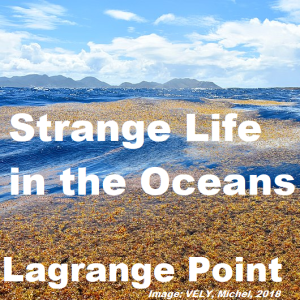
Sunday Jul 14, 2019
Sunday Jul 14, 2019
Water, water everywhere but not a drop to drink or nutrient for that matter. The Ocean can sometimes be a inhospitable place with barely any nutrients to survive off. Other times it can be home to large ocean spanning algae blooms. The oceans from the Pacific to the Atlantic can hold lots of secrets (even fresh water) beneath the surface. This week we look at 3 different papers which outline strange parts of the ocean, from large algae blooms to hidden aquifers.
References:
- Greta Reintjes, Halina E. Tegetmeyer, Miriam Bürgisser, Sandi Orlić, Ivo Tews, Mikhail Zubkov, Daniela Voß, Oliver Zielinski, Christian Quast, Frank Oliver Glöckner, Rudolf Amann, Timothy G. Ferdelman, Bernhard M. Fuchs. On-Site Analysis of Bacterial Communities of the Ultraoligotrophic South Pacific Gyre. Applied and Environmental Microbiology, 2019; 85 (14) DOI: 10.1128/AEM.00184-19
- Mengqiu Wang, Chuanmin Hu, Brian B. Barnes, Gary Mitchum, Brian Lapointe, Joseph P. Montoya. The great Atlantic Sargassum belt. Science, 2019; 365 (6448): 83 DOI: 10.1126/science.aaw7912
- Chloe Gustafson, Kerry Key, Rob L. Evans. Aquifer systems extending far offshore on the U.S. Atlantic margin. Scientific Reports, 2019; 9 (1) DOI: 10.1038/s41598-019-44611-7
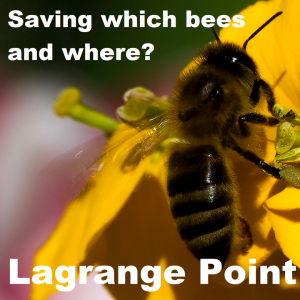
Sunday Jun 30, 2019
Episode 333 - Saving which bees and where
Sunday Jun 30, 2019
Sunday Jun 30, 2019
Saving the bees has gotten widespread understanding, but it is more nuanced than a simple sound bite. Which bees are in danger and where? How many bee species are out there and are under threat? Can domesticated bees spread disease to wild populations? How do wild flowers help feed bees but also spread disease? Can different types of crop cycles help both wild and domesticated bees thrive? We know of colony collapse disorder and pesticides, but what other threats are out there to bee populations? Does the urban sprawl play a role in destabilising the gender balance of the bee populations? Why do bee populations drop off as you approach the city?
References:
- Samantha A. Alger, P. Alexander Burnham, Humberto F. Boncristiani, Alison K. Brody. RNA virus spillover from managed honeybees (Apis mellifera) to wild bumblebees (Bombus spp.). PLOS ONE, 2019; 14 (6): e0217822 DOI: 10.1371/journal.pone.0217822
- Dimitry Wintermantel, Jean-François Odoux, Joël Chadœuf, Vincent Bretagnolle. Organic farming positively affects honeybee colonies in a flower-poor period in agricultural landscapes. Journal of Applied Ecology, 2019; DOI: 10.1111/1365-2664.13447
- Gordon Fitch, Paul Glaum, Maria-Carolina Simao, Chatura Vaidya, Jill Matthijs, Benjamin Iuliano, Ivette Perfecto. Changes in adult sex ratio in wild bee communities are linked to urbanization. Scientific Reports, 2019; 9 (1) DOI: 10.1038/s41598-019-39601-8
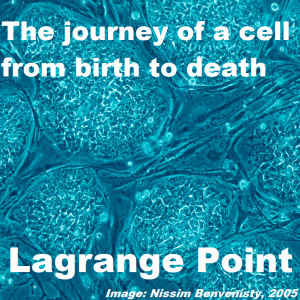
Monday Jun 10, 2019
Episode 330 - A cells journey, from birth to death
Monday Jun 10, 2019
Monday Jun 10, 2019
This week we dive into the complicated history of cells and try to figure out if you are still the same ship. How does a cell know what it wants to grow up to be? What helps it make the decision to be an optic nerve, a neuron or part of your jawbone? How old are all the cells in your body? Are they all the same age, and what does age even mean anyway? This week we dive into the complicated history of cells and try to figure out if you are still the same ship.
References:
- Rafael Arrojo e Drigo, Varda Lev-Ram, Swati Tyagi, Ranjan Ramachandra, Thomas Deerinck, Eric Bushong, Sebastien Phan, Victoria Orphan, Claude Lechene, Mark H. Ellisman, Martin W. Hetzer. Age Mosaicism across Multiple Scales in Adult Tissues. Cell Metabolism, 2019; DOI: 10.1016/j.cmet.2019.05.010
- Ruslan Soldatov, Marketa Kaucka, Maria Eleni Kastriti, Julian Petersen, Tatiana Chontorotzea, Lukas Englmaier, Natalia Akkuratova, Yunshi Yang, Martin Häring, Viacheslav Dyachuk, Christoph Bock, Matthias Farlik, Michael L. Piacentino, Franck Boismoreau, Markus M. Hilscher, Chika Yokota, Xiaoyan Qian, Mats Nilsson, Marianne E. Bronner, Laura Croci, Wen-Yu Hsiao, Jean-Francois Brunet, Gian Giacomo Consalez, Patrik Ernfors, Kaj Fried, Peter V. Kharchenko, Igor Adameyko. Spatiotemporal structure of cell fate decisions in murine neural crest. Science, 2019; 364 (6444): eaas9536 DOI: 10.1126/science.aas9536
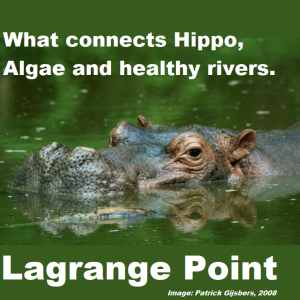
Monday May 20, 2019
Episode 327 - Hippos and Algae, Lions and Porcupines, plus Narwhals.
Monday May 20, 2019
Monday May 20, 2019
What connects Hippos, Algae and keeping the rivers of Africa healthy? What causes Lions to square-off against Porcupines? What is keeping the Narwhal population healthy despite it's genetic diversity? We look at the strange interconnection between species and how small changes in one ecosystem can destabilise a whole species.
Hippos help keep the rivers and lakes of Africa healthy...through their poo.
Hippos are essential in pumping silicon from the savannah into the rivers and lakes of Africa.
Lions hunt lots of creatures, but what needs to happen for them to try attacking a Porcupine?
Porcupines vs Lion sounds like a March Mammal Madness battle, but what causes a Lion to go after such a tough prey?
The Narwhals population is rebounding but it its still at risk due to it's shallow gene pool.
Can a species survive with a shallow gene pool?
References:
- Schoelynck, J., Subalusky, A.L., Struyf, E., Dutton, C.L., Unzué-Belmonte, D., Van de Vijver, B., Post, D.M., Rosi, E.J., Meire, P., Frings, P. Hippos (Hippopotamus amphibius): The animal silicon pump. Science Advances, 2019 DOI: 10.1126/sciadv.aav0395
- Julian C. Kerbis Peterhans, Gastone G. Celesia, Thomas P. Gnoske. Lion-Porcupine Interactions in Africa, Including Impacts on Lion Predatory Behavior. Journal of East African Natural History, 2019; 108 (1): 1 DOI: 10.2982/028.108.0101
- Westbury, M.V. Narwhal genome reveals long-term low genetic diversity despite current large abundance size. iScience, 2019 DOI: 10.1016/j.isci.2019.03.023

